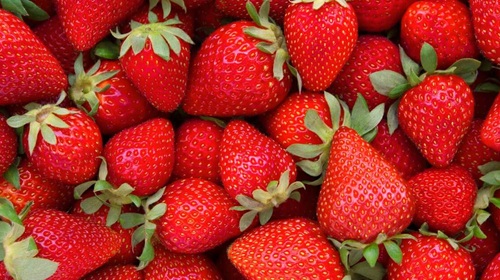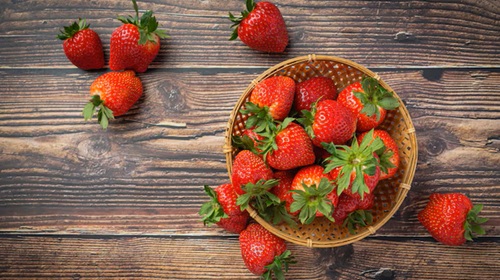Aug 15th 2025
What Are Hydroponic Strawberries? Growing Indoors Easily
If you had a strawberry patch you could return to time and time again, wouldn't that be wonderful? You can grow strawberries hydroponically in your home, on your porch, or even inside your garage. Strawberries do well in hydroponic systems because of their high-water content. This is a how-to for producing strawberries hydroponically.
Best Strawberry Variety for Hydroponics
The best types of strawberries for hydroponic growers are those that are day-neutral and everbearing.
- Strawberries that are day-neutral will continue to bloom and bear fruit until they reach a higher temperature, about 85 degrees, after which they will cease until the temperature drops again. If they are maintained at the proper temperature and light cycle, this variety can yield fruit all year round.
- In general, everbearing cultivars yield two crops annually: one in the spring and one in the fall. They could be capable of producing three harvests if the proper light and temperature are met (they don't get overheated).
How to Grow Hydroponic Strawberries
Finding a decent hydroponic system is obviously the first step. These differ significantly in terms of cost, number of plants, and functionality. So, when you buy your system, you'll need to do your research. One great option for hydroponically growing strawberries is the ALTO Garden GX Hydroponic Tower Garden.

You should also think about the growing media you plan to use. Rockwool, clay pebbles, growstones, and coconut coir are a few popular options. In order to keep your plants healthy and developing to their maximum potential, you will also most likely need some hydroponic nutrients.
Now that you know everything you'll need to get started, let's move on to the exciting part: growing your strawberries hydroponically.
Planting Techniques
There are two main planting techniques for growing hydroponic strawberries: runners and plugs.
Young strawberry plants known as runners are produced from a mother plant. You may plant runners in your hydroponic system by just removing them from the mother plant.
Plugs are tiny, already-rooted plants that are available online or at nurseries. Plugs are easy to plant; just place them in your hydroponic system's growing medium.
Make sure to put your strawberries in an area with adequate lighting, regardless of the planting method you decide on. For the strawberry plant to bear fruit, we recommend a lighting cycle of 12 – 14 hours per day.
Light Requirements
The quality and quantity of your strawberries grown hydroponically are greatly influenced by the light and temperature conditions. For individuals who lack access to natural sunshine, indoor hydroponic plants need an artificial light source. Strawberries grown hydroponically need 12 – 14 hours of light per day, and it's important to keep a regular light schedule to guarantee your plants grow properly.
When it comes to artificial lighting, hydroponic strawberries are best suited for LED grow lights. They endure a long time, use little energy, and provide the plants the ideal spectrum of light. Maintaining a particular temperature range is also necessary to support fruit production. Daytime temperatures between 65 to 80 degrees Fahrenheit are ideal for strawberry plants; any temperature outside of this range may have an impact on fruit quality and development.
Temperature Requirements
For strawberries to develop and bear fruit, temperature is essential. The optimal nighttime temperature range is 40 to 50 degrees Fahrenheit, whereas the ideal daytime temperature range is 65 to 80 degrees Fahrenheit. You may avoid possible problems like decreased crop output, altered fruit size and color, and disturbances to the photosynthetic process by regularly maintaining these temperatures around your hydroponic system.
Water Quality & pH Levels
A water-based fertilizer solution is necessary for the growth of hydroponic strawberries. Potassium, phosphorus, and nitrogen should all be abundant in the nutritional solution. Furthermore, the ideal range of water pH for strawberries is between 6.0 to 7.0.
How to Pollinate Hydroponic Strawberries
A lot of strawberry cultivars that are day-neutral are self-pollinating, which means that you may get fruit from just one plant. However, indoor strawberries require some assistance with pollination. Transfer pollen from one flower to another with a brush or gently shaking the plant will usually do the trick.
Harvesting
The type of strawberry you plant will have a significant impact on how long it takes for it to grow. It should take two to three months from seed to your first blossoms if you're using an everbearing variety. Strawberries are often ready four weeks after the vine starts to blossom.

Growing Problems for Hydroponic Strawberries
Improper Nutrient Dilution
There are a few typical issues that you could run into when growing strawberries hydroponically. When the nutrition solution is not adequately diluted, underfeeding and overfeeding can happen, resulting in scorched roots or stunted development. This problem can be resolved by diluting the fertilizer solution and monitoring the plant's development.
Nutrient Imbalance
Another issue is nutrient shortages, which can manifest as stunted growth or yellowing of the leaves. You can identify and address any deficiencies by keeping a thorough journal of your plant's development and nutrient intake. This problem can be resolved by increasing the number of essential elements in your nutrition solution.
pH Levels
pH imbalances are another potential problem that can impede plant development and result in nutritional deficits. To solve this problem, make sure the pH level of the solution is within the ideal range for strawberry plants by using a pH test pen on a regular basis.
Pest and Diseases
When growing strawberries hydroponically, pests can be an issue. These pests can be managed with biological control agents. Aphids and spider mites are naturally preyed upon by ladybugs, which can be added to a hydroponic system to help control their numbers. Fruit flies, which are drawn to strawberry fruit, can also be captured with vinegar traps.
A variety of diseases, such as botrytis, which can cause rot and gray mold, can affect strawberries grown inside. Preventive measures – such as creating and maintaining a clean growth environment, having good air circulation, and using excellent sanitation techniques, are essential to warding off such infections.
Final Thoughts
Growing strawberries hydroponically is a delightful hobby that brightens your place. Strawberries grown hydroponically offer a way to continue enjoying tasty, fresh fruits even after fall arrives. To guarantee strong and healthy plants, it's critical to consider temperature, pH levels, and sunlight needs. Growing strawberries hydroponically can be enjoyable and fulfilling if done with thoughtful planning and attention to detail.




